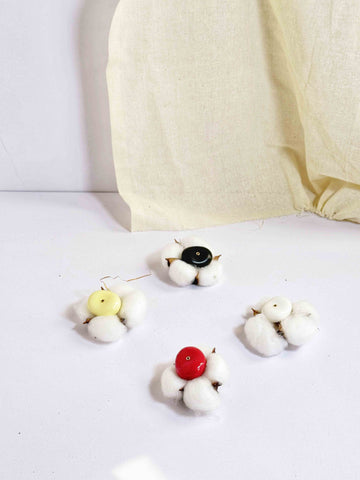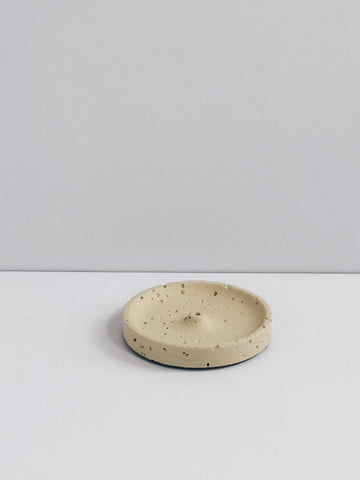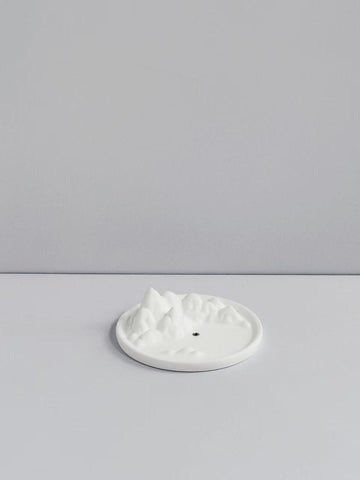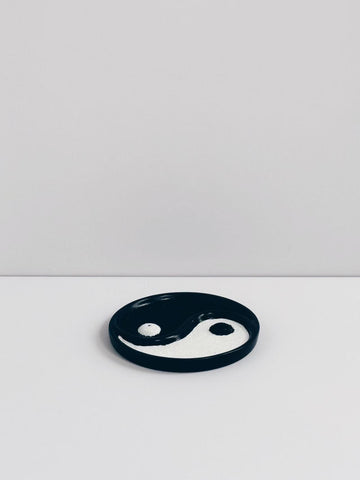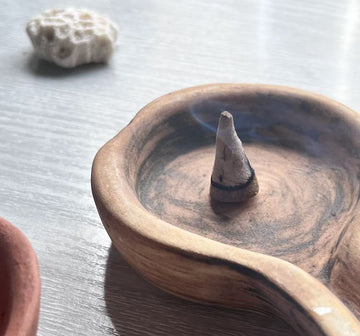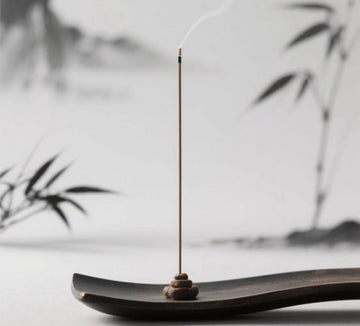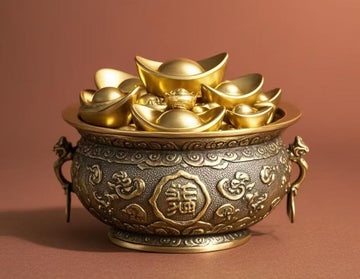In the world of aromatic rituals, incense cones and incense sticks have long served as companions for meditation, relaxation, spiritual practices, and simple sensory enjoyment. But as incense gains new appreciation among modern users seeking authenticity and wellness, the question often arises: Which is better, incense cones or sticks?
This seemingly simple question deserves more than a one-word answer. Because not all incense is made equal.
In this article, we explore the fundamental differences between incense cones and incense sticks—especially traditional Chinese incense sticks crafted without bamboo cores. We’ll examine their materials, burn time, fragrance quality, and ideal usage scenarios to help you make an informed decision.
1. What Are Incense Cones?
Incense cones, as the name suggests, are shaped like small cones—narrow at the top and wider at the base. They are made by compressing powdered incense materials into a mold, giving them their characteristic tower-like form.
Because of their shape and density, incense cones burn quickly and powerfully. A typical cone lasts for about 15 minutes, during which it emits a strong, rapid release of scent, filling the room almost instantly.
Pros of Incense Cones:
-
Quick diffusion of aroma: Ideal for filling a large space rapidly.
-
Compact and decorative: Can be used with backflow incense holders to create aesthetic smoke trails.
-
Easy to store and transport.
Cons of Incense Cones:
-
Short burn time (approx. 10–15 minutes).
-
Often contain accelerants to aid combustion, which may affect air quality or fragrance purity.
-
Quality varies widely, especially in mass-produced cones.
Backflow incense cones, a popular sub-type, are engineered by hollowing out the bottom and altering materials to produce reverse smoke effects. However, this design often requires additional chemicals or synthetic components to achieve the visual "waterfall" appearance.
2. What Are Traditional Chinese Incense Sticks?
When Western audiences think of incense sticks, they often picture bamboo-core varieties—where a thin wooden stick runs through the center, and aromatic material is rolled around it. But in traditional Chinese incense culture, a different and more refined form exists: coreless incense sticks.
Also known as 无芯线香 (wu xin xian xiang), these sticks are made entirely from incense powder, mixed with natural binders like nanmu bark or tab tree glue. There is no bamboo or wood at the center. The result? A cleaner burn, a more nuanced fragrance, and less smoke pollution.
Key Features of Traditional Chinese Incense Sticks:
-
Entirely natural materials.
-
Longer burn time—typically 45 minutes or more per stick.
-
Made using ultra-fine aromatic powders, often from premium agarwood (沉香), sandalwood, and traditional herbs.
-
Slow, gentle diffusion of aroma over time, suitable for meditation, reading, or tea ceremonies.
3. Burn Time and Fragrance Delivery: A Clear Winner?
If you're looking for a quick burst of scent—perhaps to mask odors or rapidly create a mood—incense cones deliver. Their shape promotes a fast-burning process and a high concentration of aroma in a short period.
However, for a longer, more refined experience, traditional Chinese incense sticks have the upper hand. Because they’re thin and slow-burning, they release fragrance in a gradual, layered manner. Many users describe it as a perfume-like unfolding, revealing different notes as the burn progresses.
| Feature | Incense Cones | Chinese Incense Sticks |
|---|---|---|
| Burn Time | ~10–15 minutes | 45 minutes or more |
| Smoke Intensity | Strong and thick | Gentle and wispy |
| Scent Quality | Often overpowering | Subtle, elegant, long-lasting |
| Materials | Often mixed, less consistent | Pure, natural, high-grade aromatics |
| Ideal Usage | Quick rituals, large spaces | Meditation, tea, relaxation |
4. Materials and Purity: What’s Inside Matters
Here’s where things get interesting.
Most incense cones on the market are mass-produced, meaning cost-efficiency often trumps quality. To ensure the cones burn properly—despite their dense structure—manufacturers often add combustion agents, artificial binders, or fillers. These additives can dilute the scent and potentially release unwanted smoke particles.
Traditional Chinese incense sticks, on the other hand, are usually handcrafted in small batches. Because the stick must hold its form and burn evenly without a bamboo core, it requires the use of high-quality, finely milled powders. This includes:
-
Wild agarwood (沉香)
-
Premium sandalwood
-
Frankincense, myrrh
-
Chinese medicinal herbs like borneol or clove
Good incense sticks often exhibit a signature curl when burning, or even develop a "double knot" in the ash—signs of high fiber content and skillful rolling, not impurities.
In fact, the thinner the stick, the higher the quality. Why? Because when no filler is needed, the binder ratio can be minimal, allowing the true aroma to shine through.
5. Cultural and Sensory Experience
The use of incense in Chinese culture extends beyond scent. It's linked to philosophy, aesthetics, health, and ritual. Incense burning is often paired with tea drinking, calligraphy, or meditation, where the fragrance is appreciated as a living presence that evolves over time.
Unlike incense cones, which tend to "announce" themselves boldly, Chinese incense sticks are more like a whisper, unfolding in soft waves. This gentle rhythm allows the mind to slow down, inviting reflection and sensory immersion.
In Daoist and Confucian traditions, incense also acts as a spiritual conductor. The linear form of the stick—rising steadily and vertically—symbolizes balance, ascension, and continuity.
6. So, Which Is Better: Cones or Sticks?
The honest answer is: it depends on your purpose.
| Purpose | Recommended Type |
|---|---|
| Rapid scent diffusion | Incense Cone |
| Meditative or mindful experience | Chinese Incense Stick |
| Aesthetic smoke visuals | Backflow Cone (optional) |
| Daily rituals or long sessions | Incense Stick |
| Budget-friendly quick options | Cone (lower cost per unit) |
| Natural and pure composition | Coreless Stick (high quality) |
If you're simply looking to scent a room quickly, cones may suit your needs. But if you're in search of a deeper experience—one that engages both the body and spirit, traditional Chinese incense sticks offer a much richer journey.
7. A Note on Safety and Air Quality
Because incense is burned indoors, safety is not just about fire risk—air quality matters too.
-
Cones: Due to additives or combustion agents, cones may produce more smoke, and in low-quality varieties, less healthy emissions.
-
Sticks (Chinese): Often less smoky, and if made purely from natural materials, less likely to irritate sensitive users.
Look for labels such as:
-
"No artificial fragrances"
-
"No synthetic binders"
-
"100% natural"
-
"No bamboo core" (for traditional sticks)
If you're seeking incense for wellness or aromatherapy, prioritize quality over novelty.
Final Thoughts: It’s About Intent
Rather than asking “Which is better, incense cones or sticks?”, perhaps the better question is:
What do you want from your incense?
-
If you seek quick scent coverage, go for cones.
-
If you crave a slow, aesthetic, and mindful experience, choose traditional coreless incense sticks.
-
If you're simply curious, try both—but pay attention to the ingredients and craftsmanship.
True incense is more than just scent. It’s a timekeeper, a companion, a teacher of stillness.
And once you've experienced the nuanced aroma of a well-made Chinese incense stick—crafted purely from nature’s most treasured aromatics—you may never go back.

